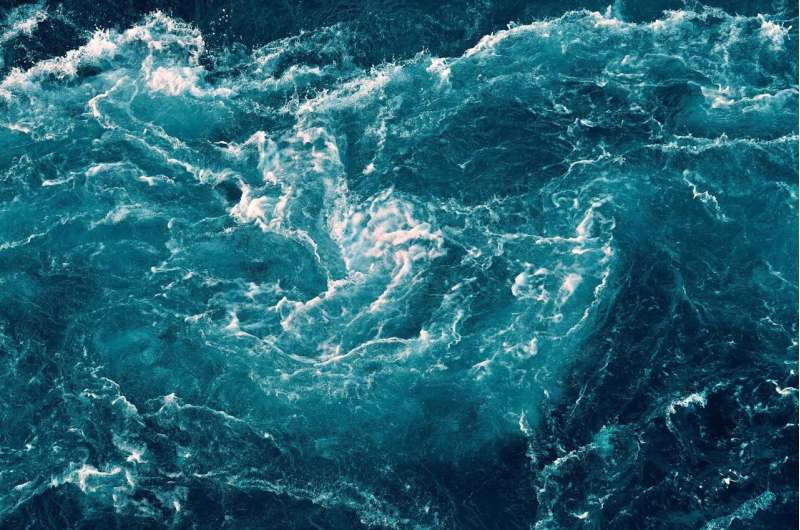This article has been reviewed according to Science X's editorial process and policies. Editors have highlighted the following attributes while ensuring the content's credibility:
fact-checked
peer-reviewed publication
trusted source
proofread
Recreation of ancient seawater reveals which nutrients shaped the evolution of early life

Scientists know very little about conditions in the ocean when life first evolved, but new research published in Nature Geoscience has revealed how geological processes controlled which nutrients were available to fuel their development.
All life uses nutrients such as zinc and copper to form proteins. The oldest life forms evolved in the Archean Eon, three and a half billion years before the dinosaurs first appeared. These microbes showed a preference for metals such as molybdenum and manganese compared to their more recent counterparts. This preference is thought to reflect the availability of metals in the ocean at that time.
Researchers from the University of Cape Town (UCT) and the University of Oxford recreated ancient seawater in the laboratory. They found that greenalite, a mineral that is common in Archean rocks, forms rapidly and removes zinc, copper, and vanadium in the process.
As greenalite formed in early oceans, these metals would have been removed from seawater, leaving it rich in other metals, such as manganese, molybdenum, and cadmium. Intriguingly, the metals they predict would have been most abundant in Archean seawater match those chosen by early lifeforms, explaining why they were favored during early evolution.
Lead researcher Dr. Rosalie Tostevin (University of Oxford at the time of the study, now Senior Lecturer in the Department of Geological Sciences at UCT), said, "We were very excited when we noticed that our results match predictions from biologists who use a completely different approach. It is always reassuring when specialists in other fields are making similar findings."
Scientists agree that the Archean seawater was very different from today, with more dissolved iron and silica and little to no oxygen. However, there is little agreement about other aspects of seawater chemistry, such as the concentration of nutrients.
"We can't go back in time to sample seawater and analyze it, so reconstructing Archean conditions is quite a challenge. One approach is to look at the chemical makeup of sedimentary rocks, but the chemistry of very old rocks has sometimes been altered. We instead decided to create a miniature version of ancient seawater in the laboratory, where we could directly observe what was happening," said Tostevin.
Tostevin and her colleague Imad Ahmed recreated Archean seawater inside a special oxygen-free chamber and watched as greenalite began to form. They observed dramatic changes in the metal concentrations in seawater as the minerals formed. They used X-ray absorption Spectroscopy at the Diamond Light Source synchrotron to prove that the metals were entering the minerals. In contrast, other metals were unaffected by this process and stayed at high levels in seawater.
Tostevin said, "We know that greenalite was important on the early Earth because we keep finding it in old rocks, such as the iron ore in the Northern Cape, South Africa, and similar rocks in Australia. We think this may have been one of the most important minerals in the Archean. But we don't know exactly how greenalite was forming in nature. One possibility is that greenalite formed deep in the ocean at hydrothermal vents. But it could also have formed in shallow waters, wherever there was a small change in pH."
Tostevin and Ahmed decided to run their experiments under both types of conditions and found that regardless of how greenalite forms, it removes metals in a similar way.
One question that concerned the researchers was whether the metals would be locked up for a long time or released back into seawater after several months or years. To test this, they heated the minerals to emulate what happens in nature when they are buried and undergo crystallization. The metals remained trapped in the mineral, suggesting this was a permanent sink for metals that would have profoundly impacted early seawater.
More information: Micronutrient availability in Precambrian oceans controlled by greenalite formation, Nature Geoscience (2023). DOI: 10.1038/s41561-023-01294-0 , www.nature.com/articles/s41561-023-01294-0
Journal information: Nature Geoscience
Provided by University of Oxford





















